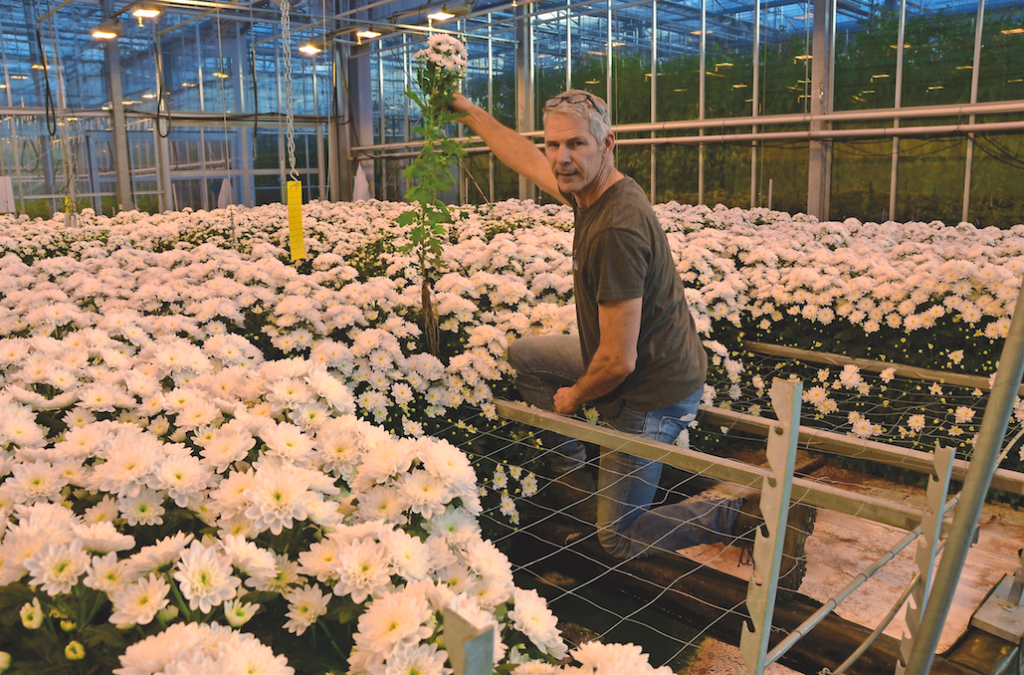After 3 years of research, Proeftuin Zwaagdijk in the Netherlands concludes that hydroponically grown chrysanthemums form a serious alternative. All tests – even the ones during the warm summer months – showed zero loss. No water related diseases occurred either, despite the fact that the nutrient solution wasn’t changed and disinfected as part of the crop rotation system.
During the testing phase, all parties learned that many problems can be avoided with good growing conditions. Good circulation and aeration of the nutrient solution turned out to be essential, whereas disinfection with oxidising substances was counterproductive. And the chrysanthemum roots were very sensitive to extremely low concentrations of chlorine.

Expectations
The test results showed that production was not inferior to cultivation on soil. It is expected that with a new, still to be developed float, which will have a design that’s more suitable for the cultivation of chrysanthemum, a substantially higher yield can be achieved, in the form of higher stem weight and/or shorter cultivation periods. Optimisation of the rooting phase and the first phase after planting could also lead to further significant improvements. The same expectation is also held for when production will be scaled up for a real production environment, because circumstances are generally much better there compared to the (small) trial greenhouse.
Floats
The chrysanthemums were fixed in the floats and their root system developed in a 30 cm deep nutrient solution. The floats make the cultivation system mobile and very suitable for extensive mechanisation and automation. This mobility also means that cultivation control (climate, lighting) can be adjusted even better to the development phase of the crop. The cultivation system is separated from the subsoil, which prevents emissions to soil and surface water. Another advantage of the system is that it limits the opportunity for thrips to pupate, because there’s no soil in which they can do this.
Jump
The transition from soil cultivation to hydroponic, is a real jump to an entire new system: to a certain extent, growers will have to learn everything from scratch. The microclimate above the float for example, is very different from that above soil (especially immediately after planting), leading to a need for air humidification.
A potential follow-up project would focus on improving the growth and development during the first phase after planting. Other priorities would be the development of a better float and the introduction to real production environments.
Support
The research project is closely followed and supported by a committee, consisting of nurseries Fred van Paassen Chrysanten and Bovebo, breeders Dekker Chrysanten and Dümmen Orange, and suppliers Van Iperen, Green Simplicity, Botman Hydroponics, KaRo and Qlobel.
For the past three years, the project was financed by the Chamber of Commerce/Innovatiemotor Greenport Aalsmeer (KansenKanon), LTO Fondsen, Hagelunie and Stumiflori. Funding was received from VannoVa-growers as well.





